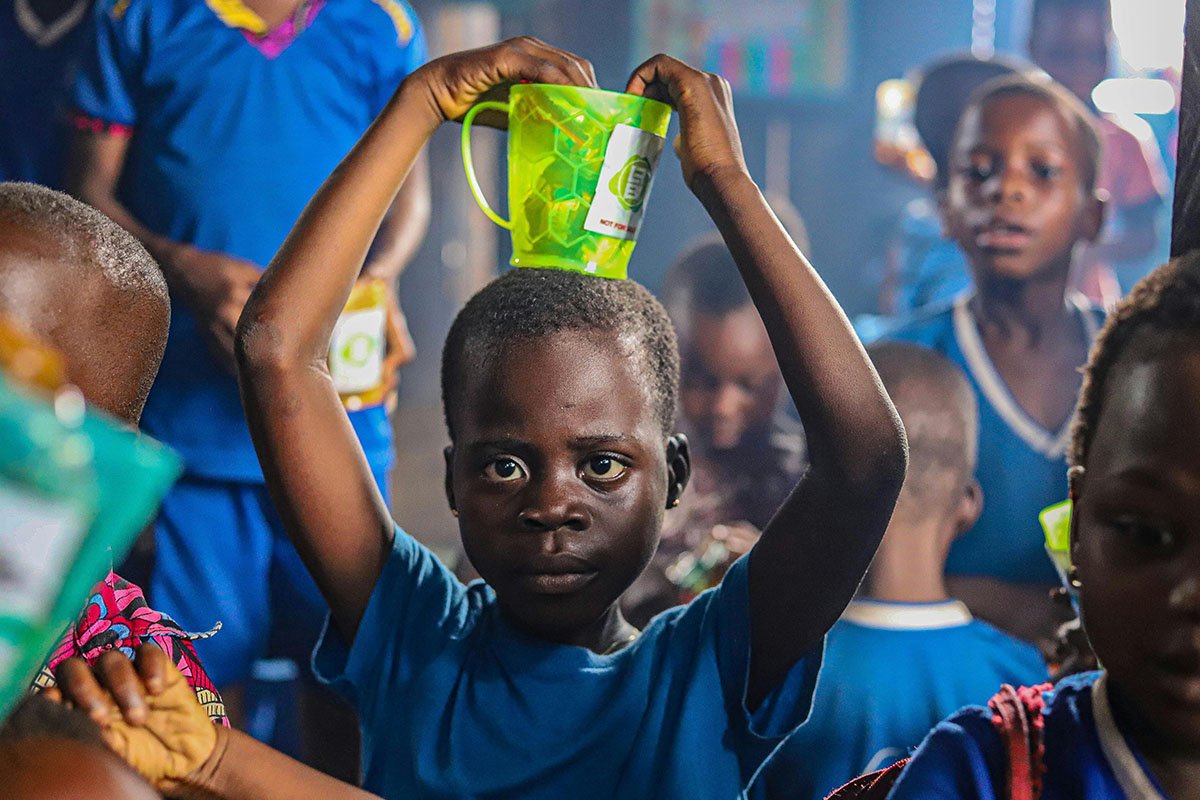
Editor’s note: Over the next few weeks, NPQ will be returning repeatedly to the issue of “trust-based philanthropy,” a term taken from the work of the Whitman Institute that involves sustained support with a good portion of unrestricted dollars. This form is widely considered far more effective than single-year restricted grants yet remains underutilized. This series is meant to advance this practice through shining a light on the outcomes as well as the processes as implemented by various funders.
Alvin Ailey American Dance Theatre (AAADT) is a worldwide sensation. That sounds hyperbolic, but it’s true; the company has performed in 71 countries on six continents, winning awards and packing performance halls across the globe for 60 years.
That kind of success in the arts world is almost always tied to philanthropy, and in Ailey’s case, it is partly the result of a 35-year partnership with the Prudential Foundation. The Prudential Foundation (PF), which has focused on both on place-based philanthropy in its home of Newark, New Jersey, and on globally inclusive economies, has supported the performance and education work of the Alvin Ailey Foundation since 1984. The Alvin Ailey Foundation encompasses the Alvin Ailey American Dance Theatre, a company of younger performers called Ailey II, the Ailey School, and various dance education and outreach programs that continue the visionary work of the company’s namesake and founder.
What makes this partnership special is not just its longevity, but the nature of support that has allowed Ailey to grow into a stable, globally recognized organization. Unlike many grantmaking organizations, in this case at least, Prudential has not only made significant, sometimes unrestricted financial commitments, they have leveraged their own relationships and knowledge for Ailey’s benefit. They have been partners in the truest sense, committed to Ailey’s growth and serving as ambassadors to other supporters and opportunities.
The relationship between Ailey and Prudential is founded on a strong sense of shared mission. Lata N. Reddy is Senior Vice President of Diversity, Inclusion & Impact at Prudential Financial and Chair and President of The Prudential Foundation, and Bennett Rink is the executive director of Alvin Ailey Dance Foundation. In December, they shared with NPQ their thoughts about their organizations’ longtime partnership..
The partnership began with Alex Plinio, an executive at Prudential who served on the board of the Ailey Foundation. Reddy said,
We were trying to help rebuild and revitalize the city, and at the same time, Mr. Ailey with his vision was trying to bring people together from all different walks of life and all different backgrounds. This unique ability to create a common experience and create a community, and this sort of recognition of our shared humanity, was top of mind for us at Prudential at that particular moment in time as well. So, it made a lot of sense for us to come together as organizations…it really began there.
AAADT is not only a brand with global reach and a devoted fanbase, it’s a singular success in its space. Ailey himself was born in the Jim Crow South and died one of the world’s most famous choreographers. His company’s dancers have always been mostly people of color; all their artistic directors and many choreographers have also been of color. The Ailey Foundation’s dancers train and perform in diverse dance traditions, including ballet, hip-hop, and various modern dance styles including the signature Horton technique, which borrows from ballet, Japanese Kabuki theatre, African dance forms, and more. Their works often focus on themes like mass incarceration, the demonization of hip-hop culture, and the resilience of Black communities in the segregated world of Ailey’s childhood.
AAADT’s first performance in 1958 was in New York’s 92nd Street Y. Within ten years, they had performed at multiple international arts festivals and the White House, and embarked on an official US State Department tour of Africa. The remarkable beauty and strength of their dancers and the emotional range and depth of their choreographic work made them famous, and Ailey’s vision of dance as a vehicle for giving and connection made them beloved. In 2008, the company was named by the US Congress a “Cultural Ambassador to the World.”
Reddy recalled how Alvin Ailey used “the heritage of the African American experience and the beauty and the power of that to tell these stories” of challenges faced by communities of color in cities like Newark that faced disinvestment and disenfranchisement.
Sign up for our free newsletters
Subscribe to NPQ's newsletters to have our top stories delivered directly to your inbox.
By signing up, you agree to our privacy policy and terms of use, and to receive messages from NPQ and our partners.
“There was an alignment there,” she said, “that people saw in early days that could really be something more powerful when we came together.” Prudential’s commitment to inclusive growth and community investment found in Ailey’s work a vehicle of storytelling that also values inclusivity and community-building.
Education is a central goal of both organizations and a significant area of partnership. Through additional partnerships with Newark Public Schools and the New Jersey Performing Arts Center (NJPAC), which Prudential helped to broker, programs like AileyDance Kids and AileyCamp offer dance classes, residencies, and performance opportunities to thousands of kids.
Bennett Rink described a cycle in which a student might enter AileyDance Kids as a young child, win a scholarship to the Ailey School, and eventually join the company; in fact, one of the company’s dancers, Christopher Taylor, did just that. “It wouldn’t be possible without Prudential,” said Rink. According to its 2016 Form 990, Ailey provides nearly $2 million in scholarship and other assistance for the students.
Program funding for schools and camps isn’t the only way in which Prudential has supported Ailey. The two organizations have tied their names and goals together at critical moments. For instance, in 2005, Ailey opened their first permanent home, the Joan Weill Center for Dance, and Prudential helped out with a $1 million donation. The center, which is the largest building dedicated to dance in New York, was a major project of Rink’s; he called it “a huge leap forward in terms of establishing that this company was going to be here for generations to come.”
Reddy said, “We try to come in when it really helps, either as an early investor…you can leverage the name of Prudential as a major and longstanding institution with a pretty strong brand, that’s helpful, so sometimes a small amount early in is good. Other times just consistent steady funding is also incredibly helpful.” In terms of brokering relationship with other funders and providing expert guidance, “the thought partnership was critical.”
Rink concurred, saying, “Prudential was one of the lead supporters of our first endowment campaign…I think that just spoke volumes to the broader funded community about the fact that Ailey was here to stay and that it was, if you will, a good investment.”
The two foundations have stuck together through multiple leadership transitions, thanks in part to strong guidance from the company’s founder. Alvin Ailey trained his successor, Judith Jamison, who was a star performer before she became artistic director upon Ailey’s death in 1989. She in turn worked with Robert Battle for over 10 years as a choreographer and artist in residence before he became artistic director in 2011. (Jamison remains with the company as artistic director emerita.) Rink explained, “unlike a lot of founder driven organizations, there was no need to reinvent once the founder had passed. There was this sort of roadmap for how to continue.” He added, “It all comes back, I think, ultimately to the board and to the support that we have from the trustees and from key partners like Prudential because it’s hard to manage those transitions if you don’t have a really solid base of support.”
Of course, Ailey’s work continues to succeed on such a massive scale in part because its work continues to be necessary. Rink said,
Alvin Ailey, who started his company in 1958 from the cusp of the Civil Rights Movement—what an act of courage it was on his part as a young black man, to say we need to see artists of color on the stage and we need to see work that reflects their experience. It was really revolutionary, trailblazing. I think we feel that that work is very relevant today, and not just in terms of the work that’s created on the stage, but it’s the work that we’re doing to provide training for young dancers, to provide exposure to kids in schools and communities.
It seems that Ailey and Prudential have found the holy grail of partnerships: their missions are aligned, and they have worked successfully to achieve several major goals. Ailey appears to trust that the Prudential Foundation will help with grants, relationships, and advocacy with other potential funders. Prudential, in turn, can see that its investments in both Ailey’s global reach and its local work in New Jersey have real impact in communities. Ailey said that “dance came from the people, and it should always be delivered back to the people.” That relationship of trust and mutual respect that he had with the communities who adored his work is mirrored today in the partnership that helps sustain his legacy.










